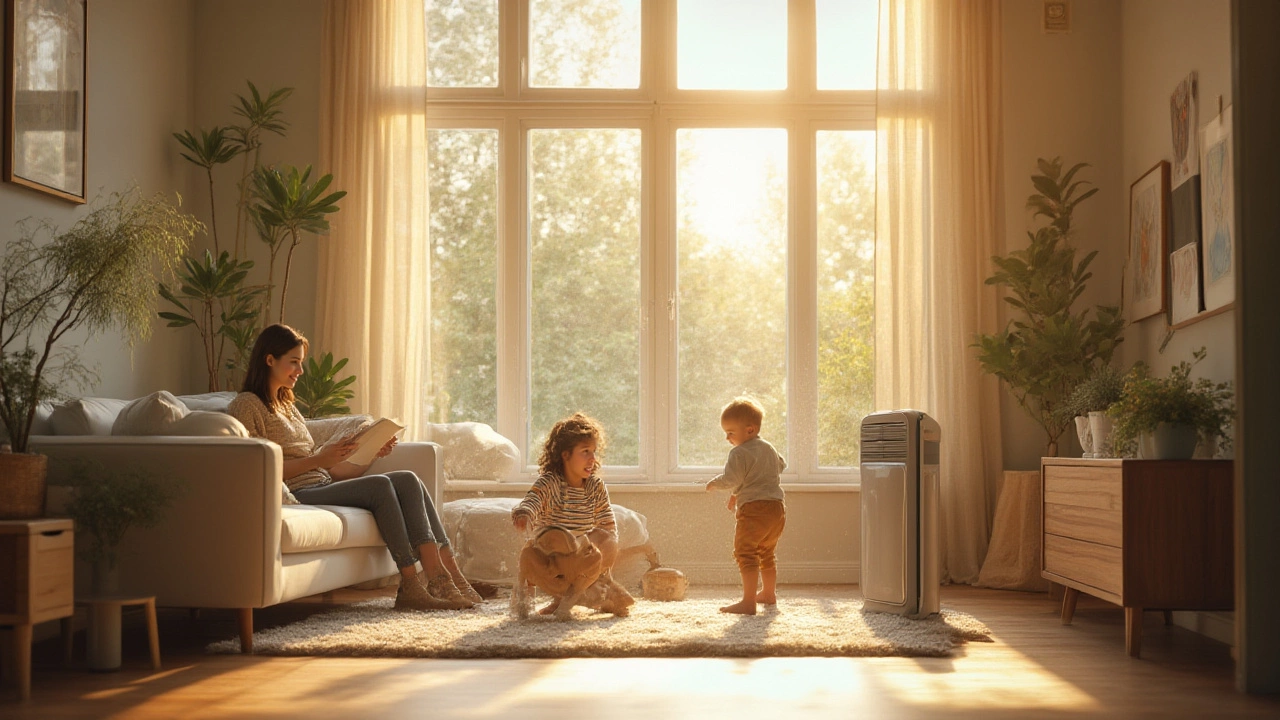Breathing indoor air that feels fresh isn’t a luxury – it’s a daily need. Whether you’re dealing with dust that settles on shelves, a musty smell in the bathroom, or allergies that flare up at night, a few smart moves can make a big difference. Below you’ll find straight‑forward advice you can start using right away.
Not every air purifier does the same job. First, figure out what you need to filter. If pollen, pet dander, or smoke are the main culprits, look for a unit with a true HEPA filter – it traps particles as small as 0.3 microns. For odors and chemicals, a model with an activated‑carbon layer adds the needed absorption power.
Room size matters, too. Check the purifier’s CADR (Clean Air Delivery Rate) rating; the higher the number, the faster it cleans. A 150‑sq ft bedroom only needs a small unit, while an open‑plan living area may require a larger machine or two smaller ones positioned strategically.
Maintenance is another hidden cost. Filters that need changing every three months keep performance high, but they also add expense. Some brands sell washable pre‑filters that extend the life of the main HEPA cartridge – a good way to save money.
Filters can’t fix everything, so keep the source of dust and mold under control. Vacuum with a machine that has a sealed system and a HEPA bag or canister; this prevents dust from escaping back into the air. For hardwood or tile floors, a microfiber mop picks up fine particles that a vacuum might miss.
Bathrooms and kitchens are prime mold spots because of moisture. After a shower or cooking, run the extractor fan for at least 15 minutes or open a window. Wipe down tiles and shower doors with a vinegar‑water solution; the acidity slows mold growth without harsh chemicals.
Don’t forget the hidden places: behind bookshelves, under the fridge, and inside HVAC vents. A quick dusting with a damp cloth every few weeks removes buildup before it can become airborne.
If you already see black spots on walls or a persistent musty smell, clean the area with a mix of water and a little bleach (one cup per gallon). Wear gloves and keep the room ventilated while you work. For larger infestations, a professional assessment might be needed.
Putting these steps together creates a layered defense: an efficient air purifier catches what slips past, while regular cleaning stops new pollutants from forming. The result is air that feels lighter, smells fresher, and is easier on your lungs.
Ready to upgrade your home’s air? Start with a purifier that matches your biggest indoor threat, set a cleaning schedule that tackles dust and moisture, and watch the difference within days. Your home will feel more comfortable, and you’ll notice fewer sniffs and sneezes – a win for everyone under the roof.

Find out exactly where to place an air purifier for cleaner, healthier air. Learn smart tips for every room to boost your home's air quality.

Understanding how long it takes for an air purifier to clean the air in a house involves examining several factors including the size of the room, the type of air purifier, and its efficiency rating. This article explores the mechanisms behind air purifiers and offers insights into optimizing their performance in your home. You will also find tips on choosing the right model based on your specific needs. Additionally, learn how factors like pollution levels and maintenance influence air cleaning speed.